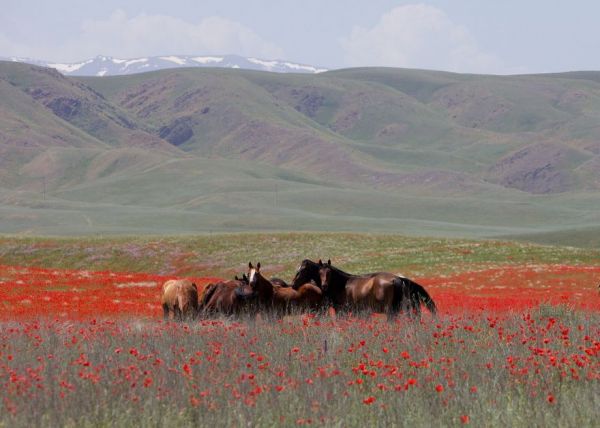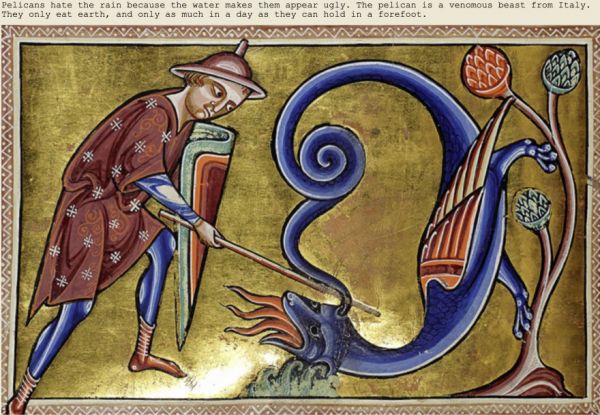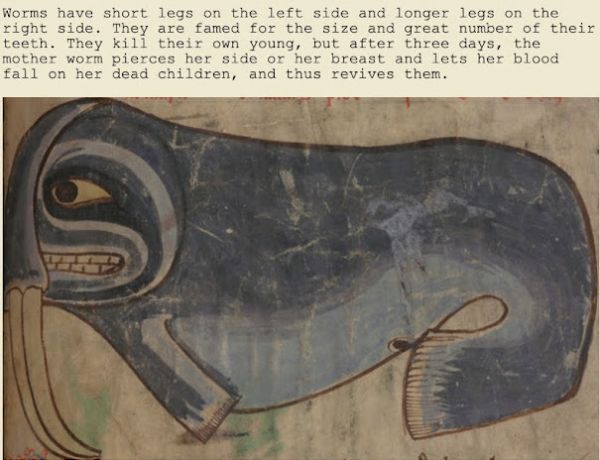The trouble with fantastical legends from antiquity is that they change over time. Storytellers embellish the accounts to make them more exciting or more meaningful. The oldest versions of these stories may have been lost forever, but the best yarns begin with a grain of truth. Evidence of those grains of truth emerge when archaeologists discover the remains of the places where those stories were supposed to have occurred.
The King Arthur legends may have been based on a real person, although not in the form he takes in the stories. The places associated with Arthur are real, and more discoveries are made in those places all the time. The city of Troy figures heavily in Greek mythology, and has been unearthed gradually over 150 years of excavations in Turkey. The lost city of El Dorado could be hiding right under our noses. The Pool of Siloam was lost in Jerusalem for thousands of years before it was discovered in 2004. Read about these and other ancient places that were relegated to mythology until they were found, at Smithsonian.
"Equal protection under the law" is part of the 14th Amendment of the United States Constitution, but it's not always practiced. There is a city ordinance in Cleveland, Ohio, that states a woman cannot wear patent leather shoes. The reason behind that is the fear that men will use the reflective surface to see up a woman's skirt! Another Cleveland regulation stipulates that a woman cannot show her cleavage. Not that anyone is enforcing these rules today, but why are they still on the books?
Some states once had laws that prohibited women from working night shift jobs, because they were so weak and frail. Up until 1923, many states had laws against women wearing pants. Women in Washington State were prohibited from sitting at a bar until a lawsuit in 1969. They could be served if they were sitting at a table, though. These are all part of a roundup of strange, sexist laws in the United States. Most have been overturned, but you may be surprised at how recently that happened. A few of these laws are still valid, although not enforced, because who has time for such nonsense?
Europeans who colonized Africa had trouble sending their horses to sub-Saharan countries, because they would be bitten by flies and died of the diseases those flies carried. The obvious answer was to domesticate zebras to ride and carry cargo instead. Not a good idea. While zebras had some immunity from the diseases that killed horses, they did not want to be domesticated. Zebras aren't just striped horses; they are wild animals that are distantly related to horses. And the reason they could survive among all those disease-carrying flies were the distinctive stripes they developed. Nature knew that fly bites were more dangerous to these creatures than the lions that ate them, so zebras invented their own kind of dazzle camouflage. This TED-Ed lesson from Cella Wright covers the research done to find out why zebras abandoned the kind of brown camouflage most animals use for flamboyant stripes. -via Laughing Squid

A scientific study our of Spain does not refer to prehistoric cave people, but a community of Christians weho lived in manmade caves carved out of the cliffside at Las Gobas for hundreds of years. Data from burials in their cemetery are dated from the 7th to the 11th centuries, so the community was founded after the Roman Empire receded from Spain, while the Visigoths ruled. The community stayed in the caves during the Muslim conquest, and then built a small village outside the caves in the 10th century, although they kept using the cave church for another hundred years.
DNA from human remains tells a story of a small group founded by related men, in which marriages were kept within the community, leaving evidence of inbreeding. Genetic material from the bacteria and viruses they carried tell us more about where the people came from and who they encountered over time. Injuries indicate the group was no stranger to violence. Still, each discovery raises more questions. Read what science can and cannot tell us of the cave-dwellers of Las Gobas despite their lack of documentation at Ars Technica.
(Image credit: Iapmetoj)

Instagram user @nn.hcafe prepares astonishing meals that look almost too good to eat. They're true works of art that wow our senses with almost surreal forms.
This cake, which resembles a piece of skyline, is one of her more exemplary pieces. Both the clouds and the outside atmosphere are made of coconut-flavored gelatins. She makes the clouds first, then adds them to the transluscent gelatin as it hardens. You can see a video and how-to video here.
-via Totally Gourmet
It's always a good idea to keep control over the rights to a song you wrote. A famous case is Dolly Parton's "I Will Always Love You." Elvis Presley wanted to record the song in 1974, but Colonel Tom Parker demanded that Elvis get half the publishing rights, and Dolly said no. Eighteen years later, Whitney Houston sang the song and made Dolly "enough money to buy Graceland." But it doesn't always turn out so well.
The song "Without You" went to number #1 when Harry Nilsson released it from his album Nilsson Schmilsson in 1971. Mariah Carey's version in 1994 became a global hit. What you might not know is that the song was written by Pete Ham and Tom Evans for their band Badfinger. They recorded for the 1970 album No Dice, but it was never released as a single. The songwriters were thrilled when Nilsson's cover became a hit. Surely they would enjoy royalties from the song, but it was not to be. Ham committed suicide by hanging in 1975, after their business manager ran off with the band's money. Evans did the same in 1983, after an argument over the royalties to "Without You."
You can hear Badfinger's original recording of "Without You," along with five other songs that became big hits in cover versions, but not for their obscure original rock recordings, at Cracked.
Animals of the Namib desert in Namibia flock to a waterhole in the Gondwana Namib Park, and you can follow them anytime with a dedicated live stream. At five this morning (11AM in Namibia), I watched some wildebeests, a litter of young warthogs, and an ostrich hanging around. This particular waterhole was built in 2006 and is connected to a reservoir with a solar-powered borehole, equipped with a float to signal a refill when the water level drops. That reliability ensures that animals will show up to get a drink, since the size of the hole matters little when it's always filled. The park is adjacent to the Namib Naukluft Park, and there are no fences, so animals can roam over 21,830 square miles of reserved land.
In the video compilation above, you'll see how the animals take their turns at a drink depending on species. If one species takes too long, they may be chased off so that others can drink. Sometimes a fight breaks out, like when an ostrich challenges an antelope. When the cheetahs gather, all the prey animals move back a respectful distance to watch until the coast is clear. The leopard arrives at night. All of them hope to get a drink before the warthogs take a bath.
If you like the compilation, you'll want to check on the livestream during different parts of the day to see what's going on in Namibia. Since the park relies on ecotourism, you may sometimes catch a human on camera. The live discussion to the right will identify animals as they arrive. -Thanks, gwdMaine!

Every new discovery in science adds to the body of knowledge we've built up about our world. But science as a philosophy must also be open to the possibility that we've been reading the clues wrong, and be ready to change gears when needed. In the field of archaeozoology, ancient horses have been unearthed to tell the story of when and where horses were first domesticated. That act enabled people to travel long distances, which led to exploration, trade, war, and conquest. Our history would have been quite different without the the use of the horse.
The prevailing theory for the last few decades has been that horses were first domesticated in Kazakhstan by the Botai culture in the fourth millennium BC. The bones of horses from that era and area seem to show evidence of using a bit in their teeth, and the horses may have been milked for human consumption. But you can't stop studying a question just because you think you know the answer. More recent research, using DNA, has thrown a bit of cold water on the theory. As of now, it seems more likely that horses were actually domesticated a couple of thousand years later, although still somewhere on the steppes of central Asia. Read what the evidence shows and how scientists have had to reconsider their conclusions at the Conversation.
(Image credit: Togzhan Ibrayeva)
Why would Screen Junkies go back 36 years to do an Honest Trailer for Beetlejuice? Because the sequel is finally going to hit theaters this weekend. Beetlejuice Beetlejuice will bring back Michael Keaton, Catherine O'Hara, and Wynona Ryder, but not Alec Baldwin nor Geena Davis. It premiered at the 81st Venice International Film Festival on August 28th, and so far has garnered "generally favorable" reviews from critics. That could mean anything, since the original received mixed reviews and became a beloved cultural touchstone. Still, it's hard for any sequel to measure up to the original. The 1988 Tim Burton horror-comedy was ultra bizarre and beyond the realm of believability, but that was the point. It was a lot of fun! If the new movie can offer that kind of fun, that's all that matters. This Honest Trailer will remind you of what Beetlejuice is all about and give you an anchor for comparison when you see the sequel this weekend.

In 1920, Chandra Shumsher Jung Bahadur Rana was the autocratic ruler of Nepal, having inherited the title in a family that overthrew the government decades before (he had actually deposed his brother). Rana ruled with an iron hand, and decreed that all books had to be approved by a government board before publishing. In this atmosphere, Krishna Lal Adhikari, an official in the Office of Foreign Affairs, wrote a book about growing corn, titled Makaiko Kheti (The Cultivation of Maize). He submitted the book to the Nepali Language Publication Committee, which may have skimmed through it. After all, how exciting can an agricultural manual be? The book was approved, Adhikari had a thousand copies printed, and it became a popular read.
Allies reported the book to Rana, and he was furious. Tucked into the manual for corn farming were some metaphors that could be taken to refer to Rana and his political allies. Or they might have been completely benign. It did not help that Adhikari was a known free speech advocate. He was arrested, and ordered to turn over all copies of the book- his sentence would depend on it. Adhikari rounded up 999, but could never find the last book. He contracted tuberculosis in prison and died before his sentence was up.
What could have possibly been in a book about raising corn that was so politically objectionable? No copies have existed for a hundred years. But there are some examples of what Rana found to be critical of his government that would only be decipherable if you were looking for them. Read those, and the story of how Adhikari became a literary martyr, at Amusing Planet.
The question that came into Randall Munroe's What If? series (previously at Neatorama) specifically asked if a human could survive a nanosecond on the sun if he were teleported there and back instantly. That glosses over the danger of approaching and leaving the sun, because a human couldn't survive long enough to get near the surface if traveling in a conventional manner. But a nanosecond is a billionth of a second, and a millisecond is a thousandth of a second, so this question deserved to be explored. You'd want to know what to expect before you embark on such a mission, if it were at all possible. The surface of the sun is a few thousand degrees, which is pretty darn hot. The interior of the sun is much hotter, so your teleportation machine would have to calibrated just so. Just to be safe, if you want to teleport somewhere to warm yourself up, make it the Seychelles, and stay longer than a nanosecond.

We know that color perception is an individual matter. We will never be able to look through someone else's eyes, but we can test how people label colors compared to each other. The language we use for colors affects these tests greatly, as color names vary over time and by culture. The site Is My Blue Your Blue? offers a test to see how you label shades of blue. Your screen will show a color, and you click on your opinion at the bottom. The shades will get closer and closer until your perception can be plotted on a graph along with the results of others taking the test. This test only distinguishes blue from green; now I want to try this with other colors. My results ranged from 174 to 177, depending on the time of day. Others say it also depends on your screen, the lighting in the room, and whether you have undergone cataract surgery.
By the way, if it tells you that turquoise is green to you, remember that is just a color sample, and has nothing to do with the rock. I have both green and blue turquoise jewelry. -via Metafilter
It will be hard to pick a winner in this dance off, but who cares as long as you enjoy it? You know Australian dancer Smac McCreanor as the viral dancer who interprets the dance moves of animals and inanimate objects alike. That's the very essence of "interpretive dance." This time she's emulating an actual dancer! Darwin the parrot is a superstar on TikTok for his smooth dance moves to all kinds of music. Could a human do better? Smac wanted to find out if she can dance as well as the parrot, and I believe she does. But you'll have to watch twice to see, because I couldn't take my eyes off Darwin the first time I watched this video. Smac has been following Darwin's videos for some time, working out all the moves for the TikTok audience. This video is a compilation of those efforts so far, but there will most likely be more in the future.
I've sometimes used the sad but common adage "there is no problem that can't be solved by throwing enough money at it." I'm sure you have seen that played out in real life, but Howard Hughes had enough money to make his everyday annoyances disappear, and he did not hesitate to do it. When he moved into the Desert Inn in Las Vegas in 1966, the innkeeper was annoyed that he stayed through the holidays. Hughes solved that problem by buying the hotel for $13.25 million.
Hughes rarely left his room, because by the 1960s, he was a chronic pain patient, suffering from addiction, OCD, and paranoia. He didn't sleep at night, and he was frustrated that his favorite TV station, CBS affiliate KLAS, signed off at 11 PM. So did the other TV stations. What was a billionaire to do? He bought KLAS. Not only did the station begin broadcasting overnight, but Hughes treated it as his personal movie projector. The problem was that the CBS station also had plenty of regular folks in Las Vegas watching, and what Hughes demanded from the station was chaos for everyone else. Read about Howard Hughes' personally programmed TV station at Mental Floss.

We love to laugh at medieval bestiaries, with their odd images drawn by clueless artists from secondhand descriptions and the accompanying text that appears to be based on assumptions swallowed whole or just made up on the spot. You can have a never-ending supply of these with the generator called An Abundance of Beasts. The images and text are drawn from Medieval Bestiary: Animals In The Middle Ages website and from the 13th-century book Bodleian Library Bestiary.

But be aware that the image and text are not linked. Sometimes you get an animal with a description that could plausibly be about the animal pictured, even though we all know the description is very wrong. They all are. But sometimes they are so different you cannot help but laugh. Once you've seen a fair amount of these, you'll want to go check out the sources, too. -via Nag on the Lake




